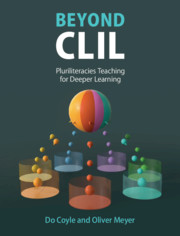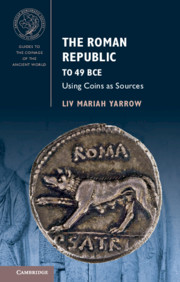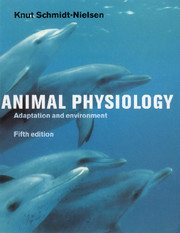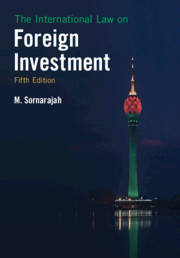Refine search
Actions for selected content:
36807 results in Cambridge Textbooks
Chapter 2 - Geometry as Physics
- from Part I - Space and Time in Newtonian Physics and Special Relativity
-
- Book:
- Gravity
- Published online:
- 03 September 2021
- Print publication:
- 24 June 2021, pp 13-30
-
- Chapter
- Export citation
3 - The ring of germs of smooth functions
- from I - Catastrophe theory
-
- Book:
- Singularities, Bifurcations and Catastrophes
- Published online:
- 04 August 2021
- Print publication:
- 24 June 2021, pp 33-48
-
- Chapter
- Export citation
Part III - The Einstein Equation
-
- Book:
- Gravity
- Published online:
- 03 September 2021
- Print publication:
- 24 June 2021, pp 417-418
-
- Chapter
- Export citation

Beyond CLIL
- Pluriliteracies Teaching for Deeper Learning
-
- Published online:
- 22 June 2021
- Print publication:
- 15 July 2021
-
- Textbook
- Export citation

The Roman Republic to 49 BCE
- Using Coins as Sources
-
- Published online:
- 22 June 2021
- Print publication:
- 06 May 2021
-
- Textbook
- Export citation

Animal Physiology
- Adaptation and Environment
-
- Published online:
- 17 June 2021
- Print publication:
- 10 April 1997
-
- Textbook
- Export citation

The International Law on Foreign Investment
-
- Published online:
- 17 June 2021
- Print publication:
- 01 July 2021
-
- Textbook
- Export citation
Index
-
- Book:
- Computer Age Statistical Inference, Student Edition
- Published online:
- 26 October 2021
- Print publication:
- 17 June 2021, pp 483-492
-
- Chapter
- Export citation
5 - Soil Biogeochemical Measurements and Data
-
- Book:
- Introduction to the Biogeochemistry of Soils
- Published online:
- 09 September 2021
- Print publication:
- 17 June 2021, pp 77-100
-
- Chapter
- Export citation
17 - Random Forests and Boosting
- from Part III - Twenty-First-Century Topics
-
- Book:
- Computer Age Statistical Inference, Student Edition
- Published online:
- 26 October 2021
- Print publication:
- 17 June 2021, pp 335-362
-
- Chapter
- Export citation
Copyright page
-
- Book:
- Introduction to the Biogeochemistry of Soils
- Published online:
- 09 September 2021
- Print publication:
- 17 June 2021, pp iv-iv
-
- Chapter
- Export citation
2 - Frequentist Inference
- from Part I - Classic Statistical Inference
-
- Book:
- Computer Age Statistical Inference, Student Edition
- Published online:
- 26 October 2021
- Print publication:
- 17 June 2021, pp 13-22
-
- Chapter
- Export citation
14 - Postwar Statistical Inference and Methodology
- from Part II - Early Computer-Age Methods
-
- Book:
- Computer Age Statistical Inference, Student Edition
- Published online:
- 26 October 2021
- Print publication:
- 17 June 2021, pp 275-278
-
- Chapter
- Export citation
Dedication
-
- Book:
- Computer Age Statistical Inference, Student Edition
- Published online:
- 26 October 2021
- Print publication:
- 17 June 2021, pp vii-viii
-
- Chapter
- Export citation
Preface
-
- Book:
- Computer Age Statistical Inference, Student Edition
- Published online:
- 26 October 2021
- Print publication:
- 17 June 2021, pp xv-xvii
-
- Chapter
- Export citation
Bibliography
-
- Book:
- Finite Element Method for Solids and Structures
- Published online:
- 08 July 2021
- Print publication:
- 17 June 2021, pp 344-347
-
- Chapter
- Export citation
Part I - Classic Statistical Inference
-
- Book:
- Computer Age Statistical Inference, Student Edition
- Published online:
- 26 October 2021
- Print publication:
- 17 June 2021, pp 1-2
-
- Chapter
- Export citation
Copyright page
-
- Book:
- Finite Element Method for Solids and Structures
- Published online:
- 08 July 2021
- Print publication:
- 17 June 2021, pp iv-iv
-
- Chapter
- Export citation
3 - Beams and Frames
-
- Book:
- Finite Element Method for Solids and Structures
- Published online:
- 08 July 2021
- Print publication:
- 17 June 2021, pp 69-110
-
- Chapter
- Export citation
11 - Bootstrap Confidence Intervals
- from Part II - Early Computer-Age Methods
-
- Book:
- Computer Age Statistical Inference, Student Edition
- Published online:
- 26 October 2021
- Print publication:
- 17 June 2021, pp 189-216
-
- Chapter
- Export citation
